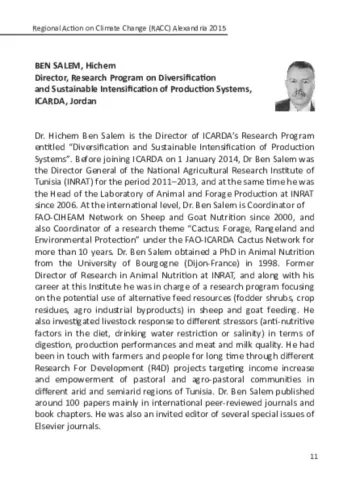Conservation Agriculture Holds Considerable Promise to Help Agricultural Livelihood Systems Coping with Climate Change: ICARDA’s Experience

Abstract
Around one-third of the global population depends on dryland
agriculture for food security and livelihoods. In addition to common
challenges (such as natural resources degradation, poverty), climate
change is exacerbating the situation. Therefore,
cost-effective and environment-friendly options that could improve the
efficiency and the sustainability of agricultural livelihood systems have to
be developed. Agricultural farming under Conservation Agriculture (CA)
holds considerable promise to help farmers cope with climate change
and to improve their incomes. CA is spread over 155 million ha, 24% of
which had been achieved during the past four years. It is based on three
main principles: i) No, or minimum soil disturbance, ii) Soil cover, and
iii) Crop diversity. CA is potentially applicable in most agroecosystems
and CA is being recognized more widely as an approach for sustainable
production intensification that offers enhancement of productivity with
improved resilience and climate change adaptability and mitigation. It
promotes resilience to climate change by increasing water availability
to the crop and rooting depth. Indeed, CA alters water balance in the
short- and long-term through decreased soil and water evaporation and
increased infiltration rate, soil water holding capacity and aggregate
stability
